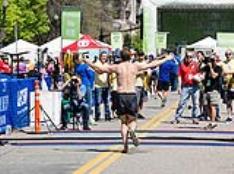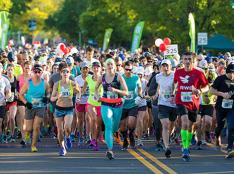It's believed that muscle cramps are caused by an increase in running pace and premature muscle fatigue, which affects the nervous system's ability to relax a muscle after it has contracted. Trail running in particular can cause local muscle cramping because there's more stress on the muscles of the lower leg as they navigate the uneven terrain of trails.
Cramps tend to occur when you run farther or faster than you're used to. They occur more often in muscles that cross more than one joint, such as the gastrocnemius muscle in the calf, which crosses the ankle and knee, and the biceps femoris—one of the hamstring muscles, which crosses the hip and knee.
Research that compared athletes who experienced muscle cramping to those who did not has shown cramping is associated with (1) running at a faster pace that may result in premature muscle fatigue, (2) a family history of muscle cramps, and (3) a personal history of cramping and tendon and/or ligament injuries.
How to Get Rid of Cramps
If you get a side stitch while running, slow the pace down and take deep, even breaths. Try bending forward while tightening your abdominal muscles and massage the area with your fingers. For muscle cramps, stop and passively stretch the muscle. Since muscle groups work in opposing pairs—with one muscle group relaxing while its opposing muscle group contracts—you can also try to relax the cramp by voluntarily contracting the muscle group opposing the cramped muscle. For example, if you get a cramp in your hamstrings, try contracting your quadriceps, which helps the hamstrings to relax.
More: 5 Key Stretches for Runners
Preventing Cramps
No runner likes getting a cramp, whether it's a stitch in your side or a muscle in your leg. Here's some things you can do to prevent stitches and cramps:
1) Warm-up adequately.
2) Don't make abrupt changes to your running pace.
3) Strengthen the muscle that is vulnerable to cramping.
4) Stretch the muscle that is vulnerable to cramping.
5) Strengthen your core muscles to support the abdominal contents.
6) Don't eat within a couple of hours of hitting the road or trails. A full, distended stomach can place greater stress in the abdominal area.
7) Train more to improve your fitness, which can prevent premature muscle fatigue.
 Sign up for your next race.
Sign up for your next race.
- 2
- of
- 2
About the Author

Get ACTIVE on the Go


Couch to 5K®
The best way to get new runners off the couch and across the finish line of their first 5K.
Available for iOS | Android






Discuss This Article